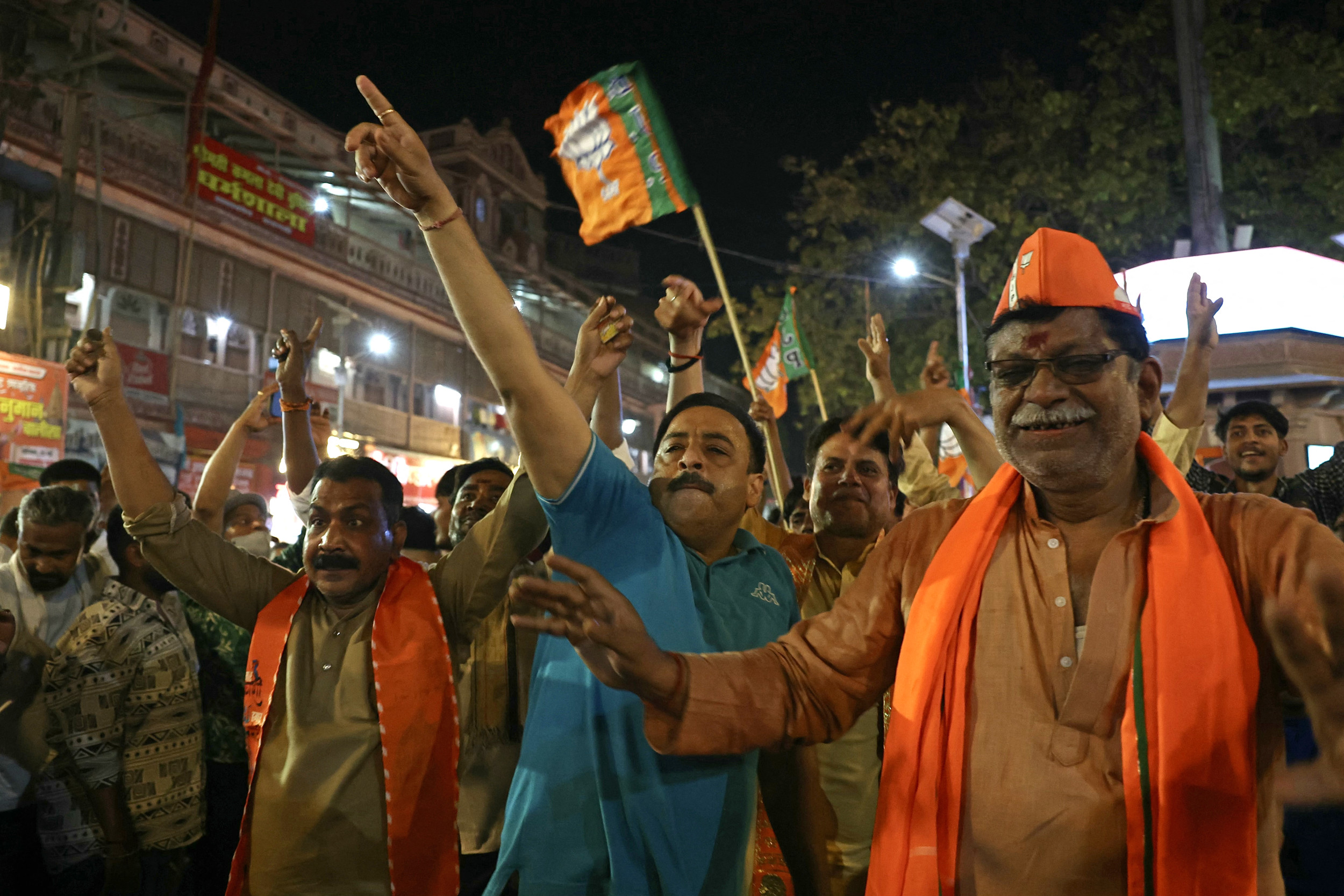Uncommon Knowledge
Newsweek is committed to challenging conventional wisdom and finding connections in the search for common ground.

India’s massive electoral process culminated on June 4, 2024, with the counting of votes for the Lok Sabha elections. Involving over 900 million eligible voters, the world’s largest election was a logistical marvel.
The six-week-long election ended on Saturday, and vote counting started on Tuesday. A record-breaking 642 million voters cast their ballots, delivering an unexpected setback to Prime Minister Narendra Modi’s Bharatiya Janata Party (BJP), which fell short of the 272 seats needed for a majority in the lower house of parliament.
The seven-phase vote, the world’s largest, began on April 19 and was held in scorching heat in many parts of the country, with temperatures rising to nearly 122° F (50°C) in some regions. Despite the heat, voter turnout was high.
Although the Election Commission of India (ECI) faced criticism for not considering heatwave warnings in their planning, the counting process was efficient, with results delivered just hours after it began.
“We have created a world record of 642 million proud Indian voters. This is a historic moment,” Chief Election Commissioner Rajiv Kumar said.
In India, the vote counting process is decentralized, occurring simultaneously across each of the 543 constituencies. It begins with postal ballots, followed by votes recorded by Electronic Voting Machines (EVMs), which have been used since 2000. Each vote is also supported by the Voter Verifiable Paper Audit Trail (VVPAT), which produces a paper slip every time a vote is cast.
After polling, EVMs and VVPAT units are securely transported to designated counting centers and stored in strongrooms, which are sealed and guarded until counting day.
To address past concerns, the country’s Supreme Court mandates that postal ballots be counted and declared before other others are counted. This change addressed issues from the 2019 elections when procedure was not followed, leading to outcry in closely contested constituencies.

After the postal ballots are counted, the regular process starts with the unsealing of 14 EVMs in the presence of representatives from all political parties. Under the supervision of the Returning Officer (RO), the counting typically occurs in a single large hall. Results are recorded and announced after each round.
For enhanced transparency, the ECI randomly selects five EVMs per constituency for VVPAT verification. This ensures that any discrepancies between the EVM and VVPAT results can be addressed immediately.
After all rounds of counting are completed, the results from all tables are consolidated. The RO declares the result for the constituency, including the total number of votes each candidate received, and the results are sent to the Election Commission for official records.
Once counting is completed and results declared, the EVMs and VVPATs are resealed and stored securely for potential future verification or recounting. The final results are then submitted to the Election Commission of India, which publishes the official results late in the evening.
By comparison, the United States’ vote counting process, while also rigorous, differs significantly in scale and speed. The U.S. primarily uses a combination of paper ballots and electronic voting systems, depending on the state, and has varying state laws on vote counting deadlines.

Results in the U.S. are often delayed due to the extensive use of mail-in ballots. This was especially true during the 2020 election due to the COVID-19 pandemic. This led to a prolonged counting process, with final results taking days to weeks to finalize.
On election night, initial results coming in favored then-President Donald Trump over Joe Biden due to the early counting of in-person votes, which he had encouraged his supporters to use. However, as mail-in ballots were progressively counted in the following days, the numbers began to shift towards Biden.
States like Pennsylvania and Georgia, crucial for the 2020 election outcome, faced significant delays as they counted a record number of mail-in ballots. Ultimately, Biden was declared the winner, securing 306 electoral votes to Trump’s 232. The final results were not confirmed until several days after the election.
Newsweek is committed to challenging conventional wisdom and finding connections in the search for common ground.
Newsweek is committed to challenging conventional wisdom and finding connections in the search for common ground.